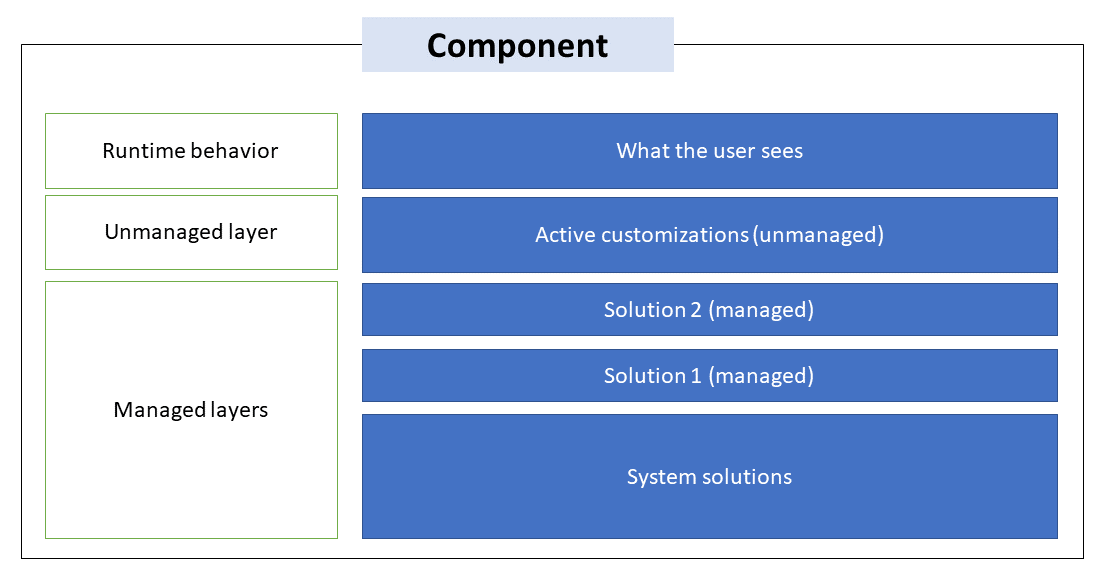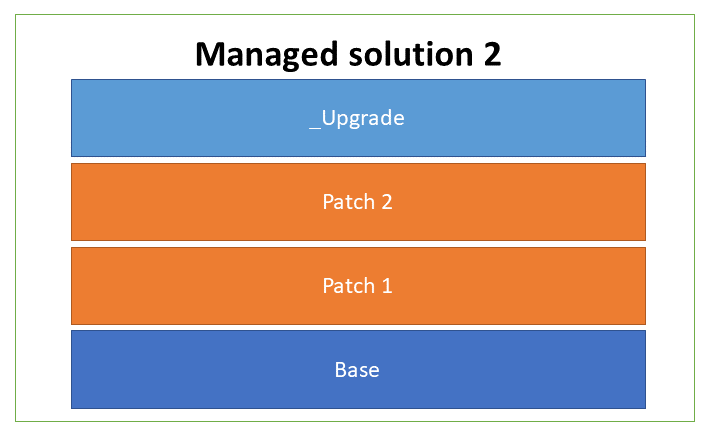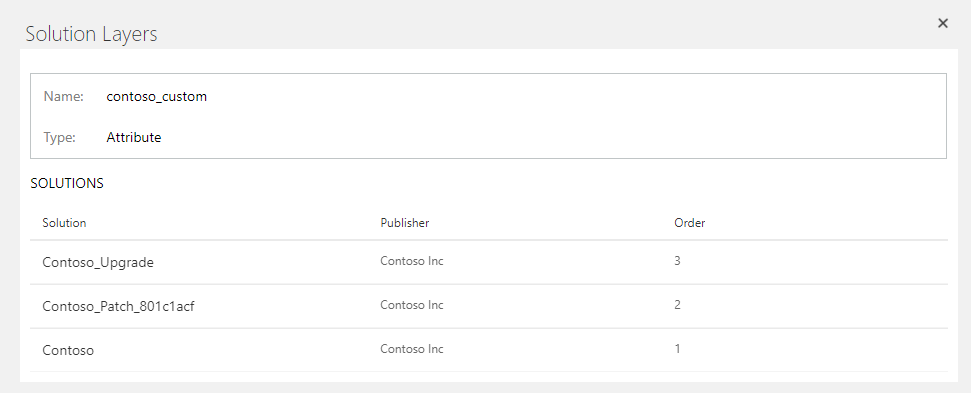Solution layers
Solution layering is implemented at a component level. Managed and unmanaged solutions exist at different layers within a Microsoft Dataverse environment. In Dataverse, there are two distinct layers:
Unmanaged layer All imported unmanaged solutions and ad-hoc customizations exist at this layer. All unmanaged solutions share a single unmanaged layer.
Managed layers All imported, managed solutions and the system solution exist at this level. When multiple managed solutions are installed, the last one installed is above the managed solution installed previously. This means that the second solution installed can customize the one installed before it. When two managed solutions have conflicting definitions, the runtime behavior is either "Last one wins" or a merge logic is implemented. If you uninstall a managed solution, the managed solution below it takes effect. If you uninstall all managed solutions, the default behavior defined within the system solution is applied. At the base of the managed layers level is the system layer. The system layer contains the entities and components that are required for the platform to function.

Layering within a managed solution
For each managed component, there are layers within a solution, which—depending on whether one or more patches or a pending upgrade to the solution has been imported—can include the following layers:
Base Located at the bottom of the solution layer "stack" is the base layer. This layer includes the solution publisher, which identifies the owner of the component and the managed properties associated with it.
Top The top layer is considered the current layer and defines the runtime behavior of the component. The top layer can be an upgrade or a patch, or if no patches or upgrades have been applied to the solution, the base solution determines the component runtime behavior.
Layers added from updates:
Patches If the component has one or more solution patches imported, they're stacked on top of the base layer, with the most recent patch residing above the previous patch.
Pending upgrade If a staged upgrade (named _Upgrade) is imported, it resides on top of the base and patch (if any) layers.

Important
Using patches isn't recommended. More information: Create solution patches
The following image shows an example of solution layers for a custom column that displays the base solution, a patch, and a pending upgrade.

For information about how to view layers for a component within a solution, see Solution layers.
Merge behavior
Solution makers should understand the merge behavior when a solution is updated or when multiple solutions are installed that affect the same component. Notice that only model-driven app, form, and site map component types will be merged. All other components use "top level wins" behavior.
"Top wins" behavior
With the exception of the model-driven app, form, and site map components, other solution components use a "top wins" behavior where the layer that resides at the top determines how the component works at app runtime. A top layer can be introduced by a staged (pending) upgrade.
Top layer introduced by a pending upgrade
Here’s an example of a top wins component behavior introduced by a stage for upgrade update to a solution. More information: Apply the upgrade or update in the target environment
The current top (base) layer has the Max length property of the Comments text column for the account table using the default setting of 100.

A solution upgrade is imported using the stage for upgrade option, which creates a new top layer. The pending upgrade includes the Comments text column for the account table with the Max length property value changed to 150.

In this situation, the Comments column for account records will allow up to a maximum of 150 characters during app run time.
Solution update and upgrade merge behavior
As described in the previous section, patches and a staged upgrade are stacked on top of the base solution. These can be merged by selecting Apply upgrade from the Solutions area in Power Apps, which flattens the layers and creates a new base solution.
Multiple solutions merge behavior
When you prepare your managed solution for distribution, remember that an environment might have multiple solutions installed or that other solutions might be installed in the future. Construct a solution that follows best practices so that your solution won't interfere with other solutions. More information: Use segmented solutions
The processes that Dataverse uses to merge customizations emphasize maintaining the functionality of the solution. Although every effort is made to preserve the presentation, some incompatibilities between customizations might require that the computed resolution change some presentation details in favor of maintaining the customization functionality.